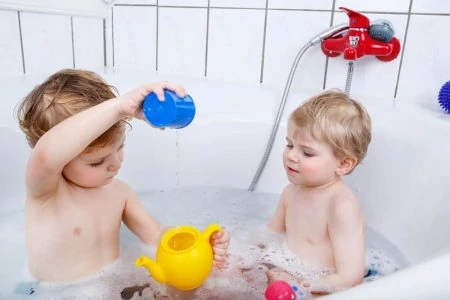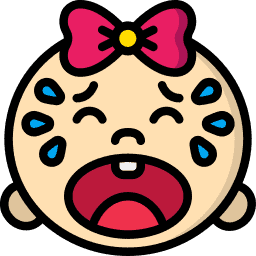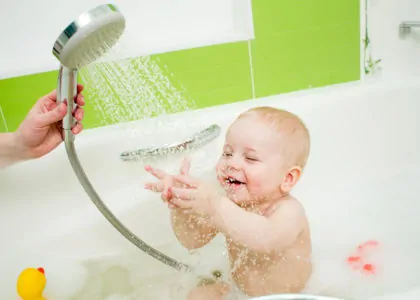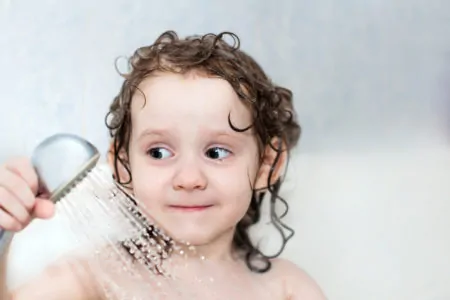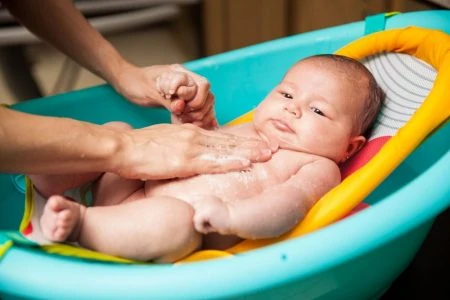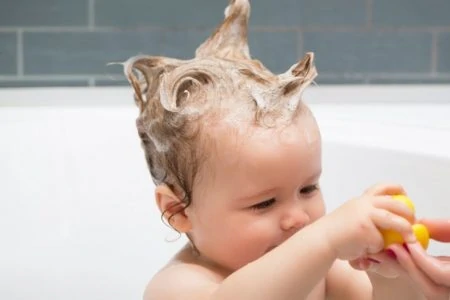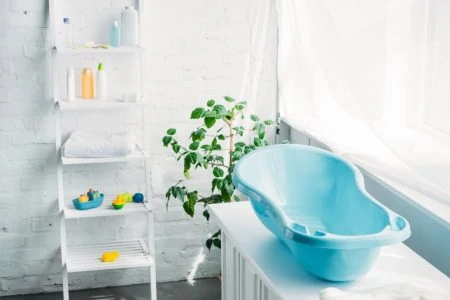Is your toddler fighting the tub? Does your baby scream the moment their toes touch the water?
You aren’t alone. We have been there. Bathtime struggles are real, but here is the secret: if you commit to making it fun, you can turn those tears into giggles.
It is time to get creative.
We have rounded up our favorite bathtime games and water activities to help you trade battles for bubble-filled bonding.
Key Takeaways
- Get Artsy: Unleash your child’s inner Picasso with Bath Artist by using washable finger paints on the tub walls.
- Learn Through Play: Use foam letters and numbers for games like Spell It Out to combine literacy with splashing.
- Sensory Fun: Engage babies with texture and sound using bubbles, puppet shows, and simple pouring games.
- Color Themes: Try a Color Bath by matching water dye with specific toys to create an immersive visual experience.
Bathtime Games For Toddlers
These activities are perfect for older babies and toddlers who need a distraction from the shampoo bottle. Feel free to tweak them to fit your child’s interests!
1. Bath Artist
My kids are obsessed with drawing, so buying bathtub finger paints was a game-changer.
Yes, it gets messy. However, the beauty of painting in the tub is the cleanup; you just rinse the “canvas” and the artist down the drain. My toddlers were so focused on their masterpieces that they didn’t even notice me washing their hair.
For a sensory twist, try a “Glow Bath.” Use neon paints and a blacklight for a visual experience that is totally unique.
Here is what you need for standard art:
- Paint: Bathtub finger paints or DIY soap crayons.
- Tools: Paintbrushes, sponges, or just fingers.
Here is what you need for glow-in-the-dark fun:
- Neon: Bathtub finger paint in neon colors.
- Light: A handheld UV blacklight (keep it dry!).
Encourage them to practice writing their name on the tiles or drawing their favorite animals.
Remember
2. Color Bath

Toddlers love categorizing things, so why not bring that skill into bathtime?
Here is what you need:
- Toys: Plastic items or bath toys in one specific color (like all red).
- Dye: Food coloring or liquid watercolor paint (optional).
Pick a theme color. If you choose blue, gather blue cups, sharks, and balls. You can even add a few drops of blue food coloring to the water to create an “ocean.”
Don’t worry about staining. As long as you stick to two or three drops in a full tub, the water dilutes the dye enough that it won’t turn your baby into a Smurf.
While they soak, go on a scavenger hunt. Ask them to find specific blue items floating in the water. It is immersive, educational, and very distracting.
3. Foam It Up!
This is a personal favorite because the texture is irresistible. My youngest used to dread the tub until we introduced “foam parties.”
It is surprisingly easy to make. Here is the recipe:
- Soap: Bubble bath, tear-free body wash, or shampoo.
- Color: Food coloring or liquid watercolor paint.
- Mixer: Hand mixer or blender.
- Water: About a quarter cup.
Mix the water and soap with a hand mixer until you get stiff peaks, similar to meringue. Separate it into bowls and add a drop of color to each.
Let your child play with the foam in an empty tub first. They can make foam hats, “cupcakes,” or beards. Once the foam starts to deflate, turn on the water to fill the tub. The foam melts into a colorful bubble bath!
4. Spell It Out

Toddler brains are sponges for knowledge. You can easily sneak in some learning by combining alphabet awareness with water play.
Grab a set of foam letters or numbers. When wet, they stick to the side of the tub or the wall tiles.
You can sing the alphabet song, spell out simple words like “DOG” or “CAT,” or ask your child to find the first letter of their name. It turns the bath into a wet and wild classroom.
Foam toys make the best bath toys because the water doesn’t get moldy inside them! They don’t collect any water at all.
Editor's Note:
Katelyn Holt RN, BSN, BC5. Spray Bottle Targets
Spray bottles are usually forbidden because they hold cleaning supplies. Handing your toddler a clean, safe spray bottle is a thrill for them!
Here is the setup:
- Cover: Coffee filters.
- Adhesive: Double-sided tape (optional, water usually works).
- Weapon: Clean, new spray bottle filled with water.
- Target: Bathtub letters.
Stick the foam letters to the wall using water. Flatten a coffee filter over each letter to hide it.
The mission? Your toddler has to spray the filter until it becomes translucent, revealing the “secret code” underneath. This is fantastic for building hand strength and fine motor skills.
6. Anatomy Lesson
This game requires zero props other than a washcloth and soap, but it helps toddlers learn body awareness.
Ask your toddler, “Where is your elbow?” When they point to it, scrub it clean. Move on to knees, ears, and belly buttons.
To keep the energy high, sing “Head, Shoulders, Knees, and Toes” while you wash. It distracts them from the scrubbing and helps them learn the names of their body parts.
7. Bathtime “I Spy”
“I Spy” isn’t just for road trips. It is a great way to build vocabulary in the bathroom.
Instead of looking for letters, look for objects. Say, “I spy with my little eye… something that makes bubbles!” (The shampoo).
As they find items like the rubber duck, the faucet, or the washcloth, incorporate those items into the washing routine. “You found the washcloth! Now let’s wash your tummy.” The final item to spy is the towel, signaling it is time to get out.
Bathtime Games for Babies
1. Nursery Rhyme Concert
Babies find their parents’ voices incredibly soothing. If the sound of running water stresses them out, your singing can help regulate their emotions.
You don’t need to be a pop star. Simple rhymes or the “Baby Shark” song work wonders. The rhythm helps them relax, and if you add hand motions or tickles during the song, you might even get a few giggles.
2. Puppet Show
Distraction is key for fussy bathers. Grab a character washcloth or puppet mitt and put on a show.
Babies start tracking objects and seeing colors clearly around five months. Use a funny voice and have the puppet “eat” the soap or give your baby kisses. Narrating the bath through the puppet (“Mr. Froggy is washing your toes!”) makes the process feel like play rather than a chore.
3. Bubbles

Bubbles are magical for babies. While experts recommend waiting until age three for a submerged bubble bath to avoid skin irritation (1), blowing bubbles over the tub is perfectly safe.
Use a wand to blow bubbles above your baby’s head. They will be mesmerized by the floating shapes. It encourages visual tracking and reaching. Just keep the soap out of their eyes!
4. Bathtime Peek-A-Boo
Peek-a-boo is a classic for a reason: it teaches object permanence and is hilarious to babies.
You can hide behind the shower curtain, or better yet, use a wet washcloth. Cover your baby’s tummy, hands, or feet with the cloth, ask “Where are the toes?” and then whip the cloth away with a cheerful “Boo!”
5. Sensory Touch
Young babies learn through texture. The bath offers a unique environment to explore wet vs. dry and warm vs. cool.
Introduce safe objects with different textures:
- Soft: A natural sea sponge.
- Slick: A bar of wet soap.
- Hard: Plastic cups or floating blocks.
Let them grip a wet washcloth and squeeze the water out (great for motor skills!). You can also pour water gently over their hands using a cup to let them feel the flow.
